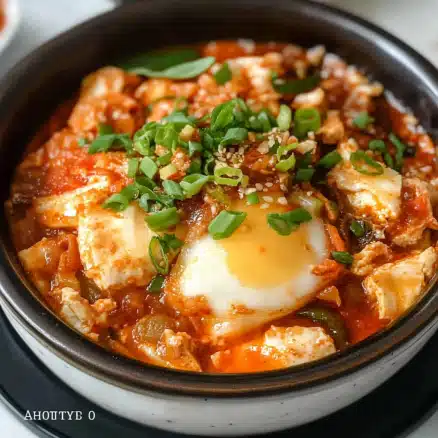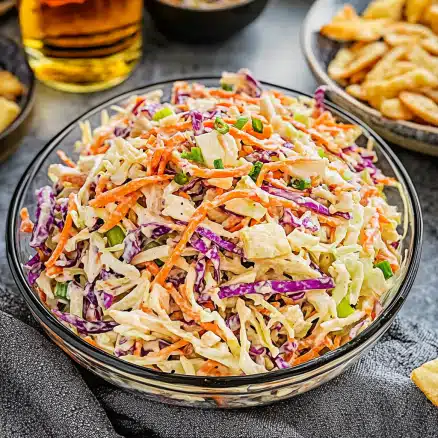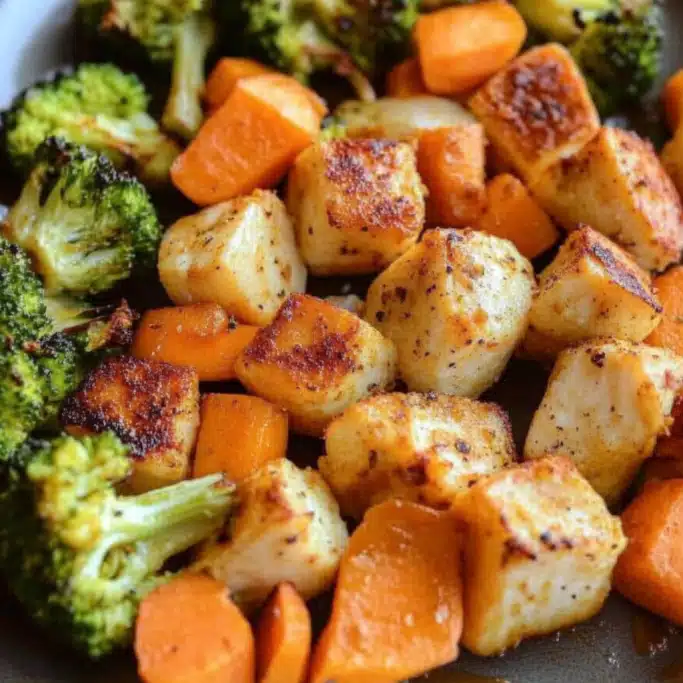Korean Soft Tofu Stew (Soondubu Jjigae)

If you’ve ever craved a comforting, spicy, and soul-warming dish, Korean Soft Tofu Stew (Soondubu Jjigae) is the answer. This bubbling hot stew, served in traditional Korean stone pots, is rich with flavors from gochugaru (Korean chili flakes), garlic, soy sauce, and anchovy broth. Silky soft tofu is the star of the dish, joined by vegetables, a choice of protein, and sometimes a cracked egg on top. It’s hearty, spicy, and deeply satisfying.
Soondubu jjigae is often enjoyed with a steaming bowl of rice and a variety of banchan (Korean side dishes). What makes it unique is the soft, uncurdled tofu (soondubu) that melts into the broth, giving it a luscious, silky texture. This stew is perfect for cold days, but Koreans enjoy it year-round because of its comforting and energizing qualities.
Ingredients You’ll Need
-
1 package soft tofu (soondubu, silken tofu works too)
-
½ onion, sliced
-
1 zucchini, sliced
-
½ cup mushrooms (shiitake or button)
-
½ cup kimchi (optional but recommended)
-
2 green onions, chopped
-
2 garlic cloves, minced
-
2 tbsp gochugaru (Korean chili flakes)
-
1 tbsp gochujang (Korean chili paste)
-
2 tbsp soy sauce
-
1 tbsp sesame oil
-
3 cups anchovy broth (or chicken/vegetable broth)
-
½ lb protein of choice (pork belly, beef, seafood, or chicken)
-
1 egg (optional, cracked into the hot stew before serving)
Step-by-Step Instructions
-
Make the broth – Prepare anchovy broth or use chicken/vegetable broth as a base.
-
Cook aromatics – In a Korean stone pot (or regular pot), heat sesame oil. Add garlic, onion, and gochugaru. Stir until fragrant.
-
Add protein – Stir in your choice of meat or seafood and cook until lightly browned.
-
Simmer stew – Add zucchini, mushrooms, kimchi, soy sauce, and broth. Simmer for 10 minutes.
-
Add tofu – Gently spoon in chunks of soft tofu. Let simmer for another 5 minutes without stirring too much.
-
Finish – Crack an egg on top (optional) and sprinkle with green onions. Serve bubbling hot with rice.
Flavor Notes & Variations
-
Make it seafood-based with clams, shrimp, or squid.
-
For a vegetarian version, skip meat and use veggie broth.
-
Add extra kimchi for a tangy, spicy kick.
-
Control heat by adjusting gochugaru and gochujang.
Serving Suggestions
Serve this stew with hot steamed rice and banchan such as kimchi, pickled radish, or sautéed spinach. It’s traditionally served in a sizzling stone pot, which keeps the stew hot throughout the meal.
Frequently Asked Questions
1. What’s the difference between silken tofu and soondubu?
Soondubu is even softer and less pressed than silken tofu, giving the stew its signature texture.
2. Can I make this less spicy?
Yes, reduce the gochugaru and gochujang, or replace some with miso paste.
3. Can I skip the egg?
Yes, the egg is optional but adds richness.
4. What broth is most authentic?
Anchovy broth is traditional in Korea, but chicken or vegetable broth works too.
5. Can I meal-prep soondubu jjigae?
The broth can be made in advance, but add tofu fresh when reheating.
6. Can I freeze it?
It’s best eaten fresh, as tofu texture changes when frozen.
7. Can I use firm tofu instead?
Yes, but the stew will lose its silky texture.
8. Why is my stew not as red as in Korean restaurants?
Restaurants often use more gochugaru or chili oil for deeper color.
Conclusion
Korean Soft Tofu Stew (Soondubu Jjigae) is the ultimate comfort food — spicy, hearty, and nourishing. With its silky tofu, savory broth, and bold flavors, it’s a dish that warms you from the inside out. Easy to customize with different proteins and spice levels, it’s a versatile stew that belongs in every home cook’s recipe collection. Serve it bubbling hot with rice, and you’ve got a complete, soul-soothing meal.
PrintKorean Soft Tofu Stew (Soondubu Jjigae)
A modern twist on the traditional Kuih Seri Muka, this Layered Pandan & Sweet Rice Cake features a sticky glutinous rice base topped with a smooth, fragrant pandan custard in distinct layers—perfectly balanced and naturally vibrant.
- Prep Time: 4 hours (including rice soaking time)
- Cook Time: 1 hour
- Total Time: 5 hours
- Yield: 9–12 pieces 1x
- Category: Dessert
- Method: Steaming
- Cuisine: Malay
- Diet: Vegetarian
Ingredients
- 1 1/2 cups glutinous rice, rinsed and soaked for 4 hours
- 3/4 cup coconut milk (for rice layer)
- 1/4 teaspoon salt (for rice layer)
- 1/2 teaspoon sugar (optional, for rice layer)
- 3/4 cup pandan juice (blend pandan leaves with water and strain)
- 3/4 cup coconut milk (for pandan layer)
- 3/4 cup sugar (for pandan layer)
- 3 eggs
- 1/4 cup all-purpose flour
- 2 tablespoons cornstarch
- 1/4 teaspoon salt (for pandan layer)
Instructions
- Drain soaked glutinous rice and mix with coconut milk, salt, and sugar. Steam for 25–30 minutes until soft and fully cooked.
- Once cooked, press the rice firmly into a lightly greased square or round pan to form an even layer.
- In a bowl, whisk eggs and sugar until well combined. Add pandan juice, coconut milk, salt, flour, and cornstarch. Mix until smooth and strain to remove lumps.
- Pour pandan mixture gently over the pressed rice layer.
- Steam the entire cake over medium heat for 30–35 minutes or until the custard is set and no longer jiggly.
- Let the cake cool completely before slicing into squares or diamonds with a greased knife for clean edges.
Notes
- Use fresh pandan leaves for the best flavor and color, or substitute with pandan extract if needed.
- Make sure to strain the custard mixture to achieve a silky top layer.
- Cover the steamer lid with a cloth to prevent condensation from dripping onto the custard.
- Let cool fully before slicing for cleaner cuts and better texture.
Nutrition
- Serving Size: 1 piece
- Calories: 210
- Sugar: 14g
- Sodium: 120mg
- Fat: 8g
- Saturated Fat: 6g
- Unsaturated Fat: 2g
- Trans Fat: 0g
- Carbohydrates: 30g
- Fiber: 0g
- Protein: 3g
- Cholesterol: 40mg
Keywords: kuih seri muka, pandan rice cake, Malaysian kuih, layered dessert, steamed rice cake, pandan custard







